


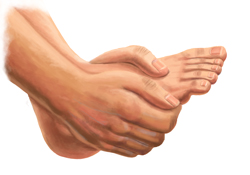
No matter what your ailment, the vast majority of your recovery is dependent on your body healing itself. No matter how you describe your injury, whether it's a tear or strain or sprain or inflammation, your soft tissue is repaired by your own body. There's no exception. The healing process is incredibly complex. And, it goes on for a lot longer than you think. The pain may be gone in a few weeks, but your body continues to heal itself long after the pain has disappeared. It is very common for the full healing process to continue for 2 years or longer, even for rather minor injuries.
If you have a soft tissue injury, your body has to heal itself.
When it comes to healing times, there are many different factors to consider. While most of these things are out of your control, there are actions you can take to minimize your healing time and reduce your risk of re-injury. We understand how frustrating it is to be injured and that's why we're here to help you heal as quickly and completely as possible.
Being patient and staying positive are two of the most important things you can do when recovering from a soft tissue injury. This can be difficult but it will contribute to a better, faster recovery process overall.
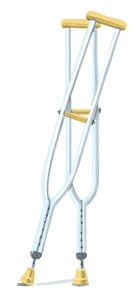
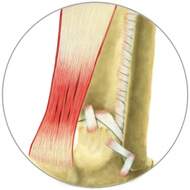
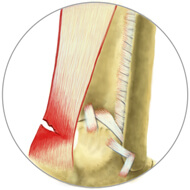
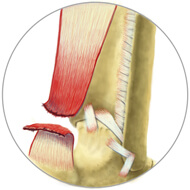
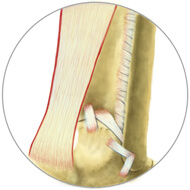
The above estimates are for healing times until the pain goes away. At this stage your tissue will be about 1/4 healed. The healing process to 90% tissue strength will continue for several months after the pain is gone.
Taking the time to heal now will pay off in the long run. It will allow your injury to heal sufficiently so you can get back to being active at full (or close to full) tissue strength. While it's likely that you will re-injure at some point, you won't get any of the healing done unless you rest. The goal is to do as much healing as possible in between re-injury.
If you start being too active too soon, you'll re-injure the area and undo any healing you've accomplished. If you persist with this activity, your body will never get a chance to recover and you'll be plagued with this injury for years to come, healing and re-injuring the area over and over. This will lead to a lifetime of unnecessary pain.
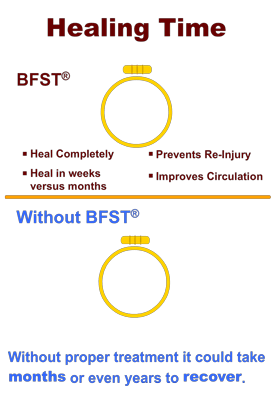
If you take the time to heal now, you can get back to being active in weeks or months instead of having to deal with the injury for the rest of your life.
Please take time to understand the healing process we have described. At different stages your body may have only regained 10% or 20% or 50% of its former strength. If you push your body beyond that limit, you're going to tear the tissue open again and reset the healing process back to stage 1. The pain is usually gone during stage 2 when only the Type 1 tissue is in place. You may only have regained 20% or 30% of the strength even though 100% of the pain is gone. If you're taking pain killers, your pain may be gone but your tissue strength is only at 10% or 15%. The problem isn't that your body isn't healing. The problem is that you are re-injuring the area again and again and again. This has to stop if you want to get better.
King Brand Healthcare Products® produces 2 specific products to help with the healing process. We have a ColdCure® product which is specifically for controlling pain and helping with the containment and membrane formation process. This is very important immediately following the injury and for after every re-injury (which even with the best of intentions will happen). Our second product is a BFST® device which is specifically for aiding in the Stage 2, 3 and 4 healing process.
The ColdCure® wraps have 2 valuable functions. First, immediately after injury, and again after every re-injury, your body has to stop new bleeding and tissue damage. New membranes form around the newly damaged tissue. ColdCure® wraps help this process by causing the circulatory pathways to contract and reduce flow. This makes it easier for membranes to form and cover/seal the leaks. Both the cold and the compression of the wrap provide this benefit. Many injuries and re-injuries are very painful. A ColdCure® wrap is an excellent way to treat the pain quickly and effectively. The effectiveness of these devices at relieving pain amazes most people the first time they use them. Many people find them much more effective and faster acting than pain killers. Treatment wise, they are a much better choice because most pain killers can actually interfere with the first stage of the healing process. By 'thinning' the blood, traditional pain killers thwart the membrane containment process. What's worse is that drugs can mask the injury and lead to a false sense of ability causing people to re-injure themselves again. If your injury has ongoing pain and swelling, ColdCure® is an excellent therapeutic choice.
The BFST® device works by stimulating blood flow and lymphatic activity in the healing tissue. Proper circulation is essential to the growth of new tissue. When you're injured and idle though, the circulation in injured tissue is limited. By using regular BFST® treatments you can stimulate the blood flow to your Type 1 and Type 2 and final replacement tissue. This can help it to regrow as quickly and healthy as possible. The healing / re-injury process is almost inevitable. The important thing is to heal as much as you can in between re-injury. You want to minimize the time it takes to heal and minimize the amount of permanent damage left to the surrounding tissue. Remember, long after the pain goes away, the healing process continues. BFST® treatments should be continued for the entire healing period if you want to regain the maximum amount of strength in the minimum amount of time. How well you heal and how quickly you heal is up to you. How you treat your wounded tissue matters.